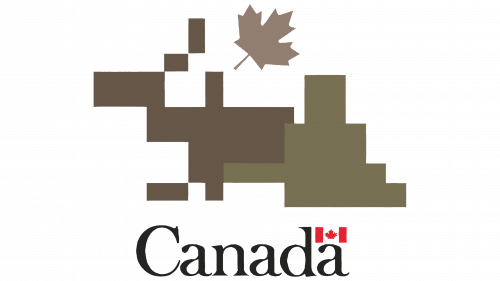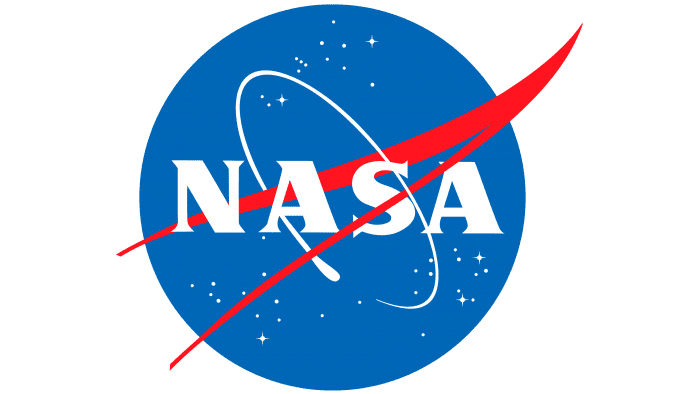The Canadian Army logo expresses the ideals of the military unit that is part of the Canadian Armed Forces. The emblem showcases the armed forces’ patriotism, strength, and unity, ready at any moment to defend their homeland to maintain peace and stability.
Canadian Army: Brand overview
The Militia Act, passed by the Province of Canada on May 19, 1855, marked the official start of the Canadian Army’s history. This legislation established the framework for organized land forces in the colonies of British North America, which subsequently evolved into Canada.
Initially, the militia consisted primarily of volunteers who were not on a permanent military payroll but undertook regular training. Their main responsibility was to protect the colony from any dangers, including American attacks.
Participation in the Crimean War lasted from 1854 to 1856 and was a crucial turning point in forming the national military. Despite not sending formal contingents, many Canadians volunteered in the British Army and gained invaluable experience in warfare.
The Fenian Raids of 1866, led by Irish nationalists using American bases, presented the militia with its first significant test. These incidents made it clear that the military needed to be better prepared and structured.
Establishing a national force started in 1867, following the establishment of the Canadian Confederation. The Royal Military College of Canada was founded in 1883 to educate officers.
The newly formed army’s first significant military action was the North-West Rebellion of 1885. Although this Métis and Indigenous insurrection was put down, it exposed several weaknesses in supply and organization.
An essential phase in the evolution of the armed forces was Canada’s involvement in the Second Boer War, which lasted from 1899 to 1902. The combat experience and prestige of the national forces were greatly enhanced by the more than 7,000 Canadian volunteers who served in South Africa.
The General Staff’s founding in 1904 enhanced military operations’ planning and coordination.
World War I, which lasted from 1914 to 1918, marked a sea change for the national army. Approximately 60,000 of the roughly 600,000 Canadian men who were sent to the front were killed. Canada’s standing abroad was greatly enhanced when its soldiers performed admirably in pivotal conflicts like Ypres and Vimy Ridge.
The army was trimmed throughout the interwar years, but modernization proceeded. Officer training programs were enhanced, and the Canadian Tank Corps was founded.
World War II, which lasted from 1939 to 1945, necessitated another massive mobilization. The Dieppe Raid, the Normandy invasions, and the liberation of the Netherlands were only a few of the significant operations in which the Canadian forces took part.
Following the war, Canada was one of the founding members of NATO in 1949, facilitating further professionalization and incorporation into the West’s defensive framework.
The nation was the third-largest UN contingent during the Korean War, sending over 26,000 men there between 1950 and 1953.
The military participated actively in UN peacekeeping missions in the 1950s and 1960s, serving in Cyprus starting in 1964 and the Suez Crisis in 1956.
When the Canadian Armed Forces were unified in 1968, it marked a significant turning point. Unifying the army, navy, and air force into a single entity brought profound organizational and managerial transformations.
The armed forces continued to participate in peacekeeping operations in the Middle East and Vietnam throughout the 1970s.
Modernization of weaponry and equipment, most notably the acquisition of new Leopard C1 tanks, defined the 1980s.
The national forces took part in operations in Somalia, the Balkans, and the Persian Gulf in the 1990s.
The longest military campaign in Canada’s history, the war in Afghanistan, lasted from 2001 to 2014.
2006, the land forces were officially renamed the Canadian Army, marking an official restoration of its historical roots.
The army took part in the Libyan operation in 2011.
The forces have been fighting ISIS in Iraq and assisting the Ukrainian government since 2014. Acknowledging the significance of the Arctic, the military expanded its troop levels there.
National military instructors trained the Ukrainian armed forces in Operation UNIFIER, initiated in 2015.
Operation REASSURANCE began in Eastern Europe in 2016. Supporting NATO allies, the forces commanded a multinational NATO fighting force in Latvia.
The year 2017 saw the introduction of a new military policy called “Strong, Secure, Engaged,” which allocated substantial funds for the modernization of the armed forces, including the army.
In 2018, the country increased its involvement in UN peacekeeping missions, particularly in Mali, where helicopters assisted the UN effort.
With the arrival of new Tactical Armoured Patrol Vehicles in 2019, the military’s protection and mobility greatly increased.
The armed forces actively aid civilian authorities in 2020 as they deal with various national situations.
An initiative was unveiled in 2021 to upgrade the infantry’s combat capability by replacing the outdated C7 weapons.
In 2022, large-scale exercises were conducted in the Arctic as part of the military’s expanded presence.
The forces extended the training program for the Ukrainian armed forces in 2023 as part of its ongoing involvement in Operation UNIFIER in Ukraine.
Plans for 2023 to update air defense equipment and strengthen the capacity to defend personnel and vital infrastructure were also revealed.
The national military is still present in Latvia as part of Operation REASSURANCE, indicating its support for NATO partners in Eastern Europe.
The acquisition of new infantry fighting vehicles to replace the outdated LAV III is part of the ongoing process of modernizing the armored vehicle fleet.
The military recognizes the relevance of cybersecurity and electronic warfare in today’s wars and prioritizes capability development in these areas.
The Arctic is still being strengthened through regular drills and regional infrastructure development.
The armed forces continue participating in foreign exercises and training programs to improve operational compatibility with NATO allies and other nations.
The military has been upgrading its gear, enhancing training for soldiers, and adjusting to emerging threats like cyberattacks and hybrid warfare over this time.
The military has likewise prioritized diversity and inclusion to more accurately represent the diversity of national society within its ranks.
Meaning and History
What is Canadian Army?
This is the Canadian Army, the primary ground combat force in the country, serving as the land component of the Canadian Armed Forces. The army is known for its adaptability and operates in various climates and terrains, including Arctic tundra, dense forests, and urban areas. It consists of soldiers from regular and reserve forces, divided into infantry, armored, artillery, and special operations units. In addition to defending the country, the army’s responsibilities include disaster relief efforts, peacekeeping missions, and emergency assistance to civilian authorities. They undergo intensive training that prioritizes cultural sensitivity, physical fitness, and tactical skills. The army’s arsenal includes everything from modern artillery and armored vehicles to advanced communication technologies.
1855 – 2024
The Canadian Army logo is designed in a heraldic style, paying tribute to centuries-old traditions. It looks patriotic because it is steeped in the armed forces’ heritage and contains symbols of national pride.
At the top of the emblem is an ornate crown. It serves as a reminder that Canada is a constitutional monarchy, with the King of Great Britain as the formal head. The crown emphasizes the country’s historical ties to the British Empire and implies the military’s loyal service to the reigning monarch.
At the center are two crossed swords—a symbol of teamwork. They represent the armed forces, their combat power, and their commitment to defending Canada. The sharp blades signal readiness for decisive action, while the golden hilts hint at loyalty and leadership.
In front of the swords is a branch with three red maple leaves. These represent the three primary commands that make up the Canadian Armed Forces: the Royal Canadian Air Force, the Canadian Army, and the Royal Canadian Navy. Their connection signifies the cooperation among the units and their shared goal of protecting their homeland.
The maple leaves were chosen because they are Canada’s most recognizable national symbol, reflecting its natural wealth, cultural heritage, and history. Red is the color of the national flag, patriotism, and sacrifice.
The flag itself (or rather, a smaller version of it) is depicted just below: two red rectangles flanking a white square with a maple leaf. It symbolizes pride in the country and serves as a reminder of the nation to which the armed forces belong.
The small flag fits above the final letter “a” in the word “Canada” at the bottom of the logo. The text is presented in a clear, elegant font with contrasting stroke thickness. The ends of the glyphs are adorned with drops and long sharp serifs, in the best heraldic tradition. The classic font style underscores the reliability, stability, and professionalism of the Canadian Army, while its elegance and simplicity speak to the orderliness of the military system.
2024 – today
Due to a sharp decrease in recruits, it was decided to create another logo for the Canadian Army to motivate young people to join the land forces. It targets the current generation and does not include heraldic elements or references to the country’s historical past. The only national symbol retained is the maple leaf, but even it has been presented unusually—gray and turned sideways as if it had dried up and fallen from a tree. These are not the best associations for a military unit that wants to attract potential recruits.
The leaf is positioned above a pixelated pattern with two large gray spots of numerous quadrangles. The abstract geometric composition does not mean anything; it is a fragment of the new camouflage called Canadian Disruptive Pattern Multi-Terrain. This pattern has adorned military uniforms since 2024. The appearance of CADPAT (MT) prompted the Canadian Army to adopt a logo that matches the style. It conveys the colors used in the camouflage: several shades of gray-brown.
The division’s leaders hoped to earn the trust of young people, but the effect was the opposite: immediately after its unveiling, the new emblem caused a stir—in a negative sense. Social media users began comparing it to a failed game of Tetris, Minecraft figures, and even a Lego moose, with some even seeing an inappropriate subtext in the abstract pattern.
Fortunately, after the wave of online ridicule, National Defence representatives apologized for the confusion and clarified that the old logo is not going anywhere—it remains the official visual mark of the Canadian Army. The new emblem will only be used as a supplementary one—in social media content, presentations, and video animations. The original idea was to build trust in the command and aid in communication with the public. No one expected this initiative to be a failure.
The camouflage pattern is accompanied by the word “Canada,” taken from the previous logo. It is still done in a contrasting font with long, sharp serifs that give the inscription a special neatness and elegance. The symmetrical letters with strict lines create an impression of stability, reliability, and accessibility. The small Canadian flag above the last “a” again emphasizes the military unit’s national affiliation. This demonstrates patriotism and readiness to defend the country from external threats.






